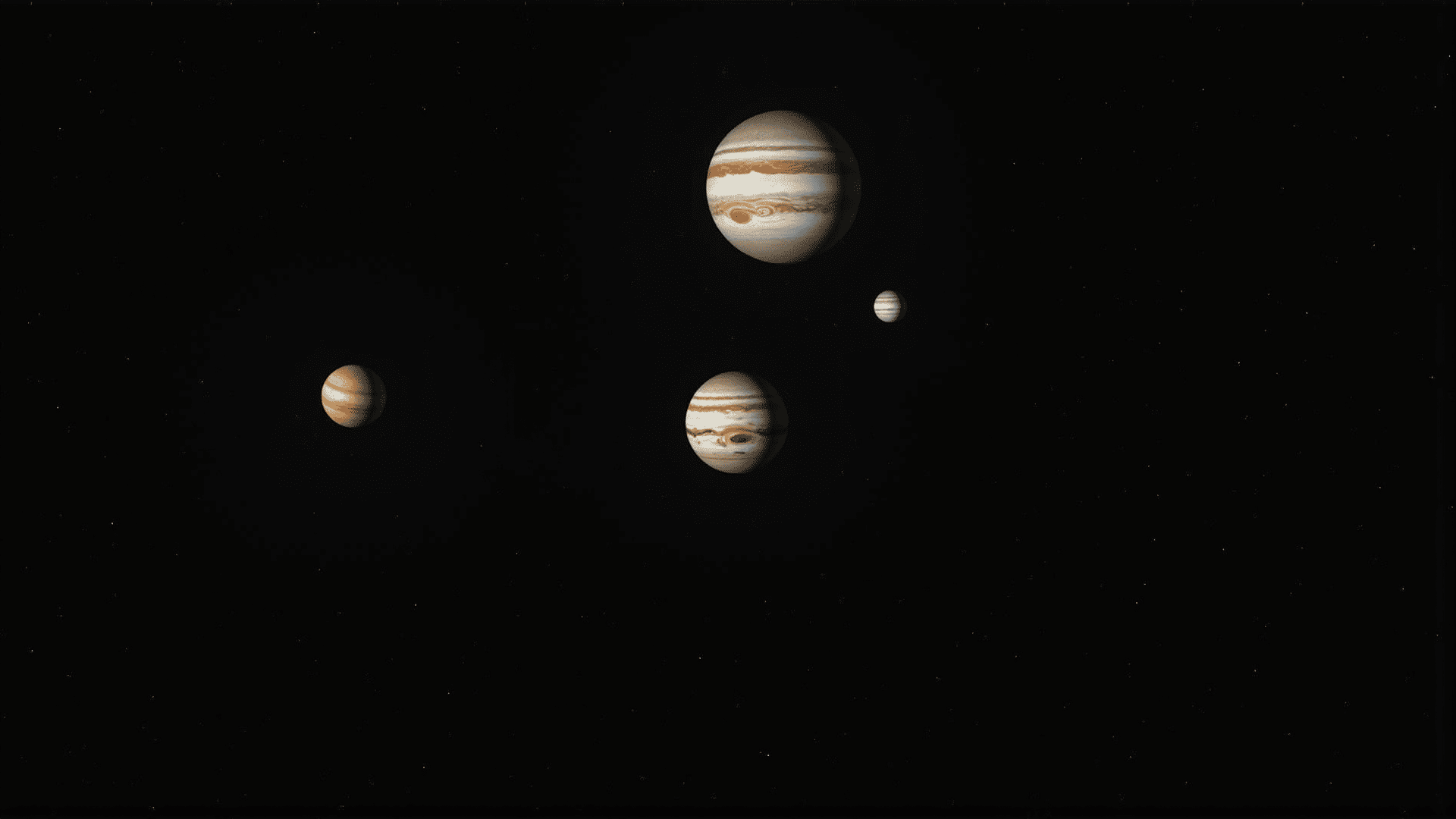Jupiter, the largest planet in our solar system, is a captivating world with its turbulent atmosphere and colossal size. However, what makes this gas giant even more intriguing is its fleet of moons, each with distinct features and stories to tell about their host planet.
Among Jupiter's impressive roster of over 70 moons, the four largest—Io, Europa, Ganymede, and Callisto—are collectively known as the Galilean moons, discovered by Galileo Galilei in 1610. These moons vary greatly in size, composition, and surface characteristics, offering a fascinating glimpse into the dynamic processes that have shaped them.
Io, the closest of the Galilean moons to Jupiter, is a world of intense volcanic activity. Its surface is dotted with hundreds of volcanoes, some of which are the most active in the entire solar system. This volcanic dynamism is primarily driven by tidal heating, the result of gravitational interactions with Jupiter and its neighboring moons. Io's vibrant landscape, painted in shades of red, yellow, and orange, reveals the complex nature of its silicate crust and sulfur deposits.
Europa, slightly smaller than Earth's moon, is a captivating world of ice and intrigue. Its smooth, bright surface is crisscrossed by a web of dark streaks, believed to be cracks in the ice shell. Beneath this icy exterior lies a vast subsurface ocean, kept warm by the same tidal forces that fuel Io's volcanoes. Europa's ocean is a subject of immense interest as it may harbor conditions suitable for life, making it a prime target for future exploration.
Ganymede, the largest moon not only of Jupiter but in the entire solar system, is an enormous world with a diameter greater than that of Mercury. It possesses an intrinsic magnetic field, a rarity among moons, suggesting a complex internal structure. Ganymede's surface is a patchwork of bright grooved terrain and dark, ancient regions, indicating a history of tectonic and possibly tectonically active processes.
Callisto, the outermost of the Galilean satellites, presents a heavily cratered and ancient surface, hinting at a largely geologically inactive past. Its surface, among the oldest in the solar system, acts as a record of impacts dating back billions of years. Callisto is also believed to harbor a subsurface ocean, albeit far deeper beneath its crust than Europa's.
Besides the Galilean moons, Jupiter hosts numerous smaller irregular moons, likely captured asteroids or fragments from larger bodies. These provide additional insights into the early solar system's chaotic environment and the complex gravitational interactions within Jupiter's vast system.
Understanding Jupiter's diverse collection of moons not only sheds light on the processes shaping these distant worlds but also on the history and evolution of our solar system. From volcanic landscapes to hidden oceans, each moon provides a piece of the intricate puzzle that is Jupiter, the majestic giant ruling over its captivating celestial domain.
